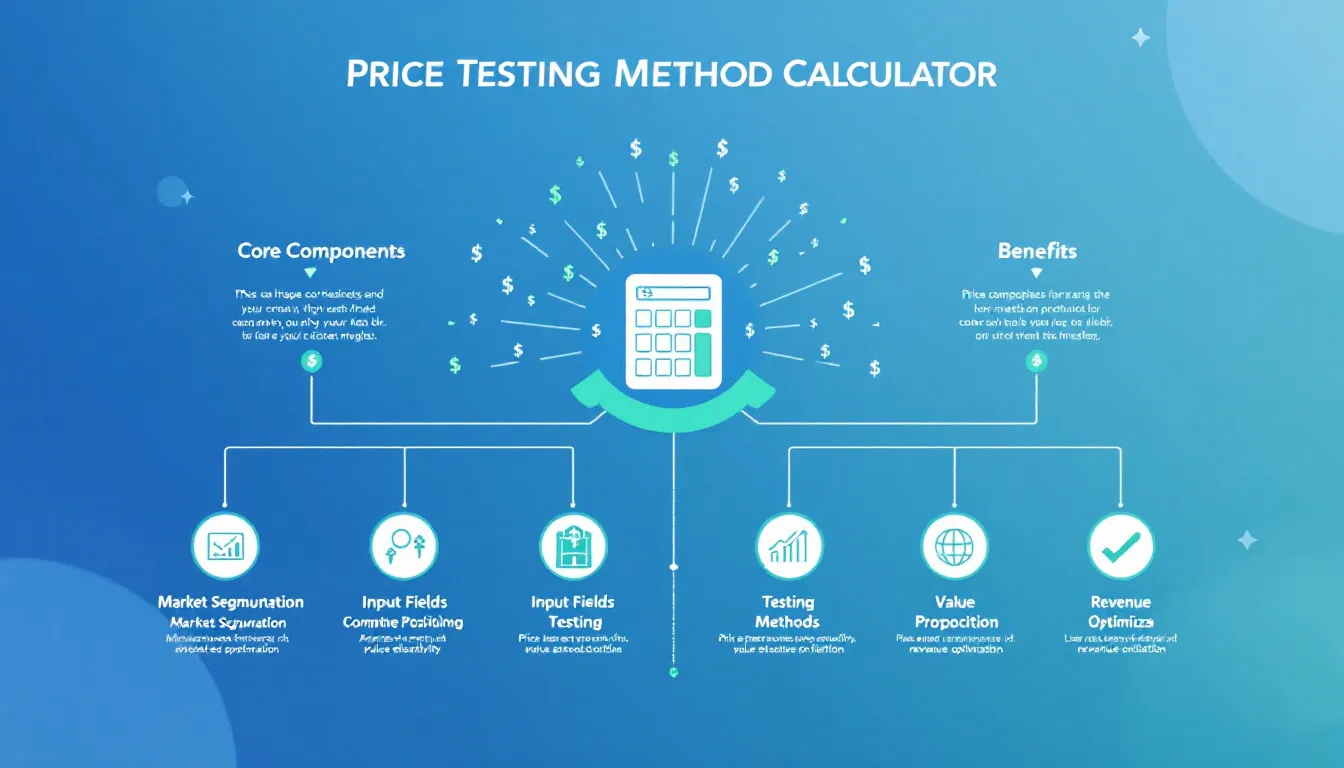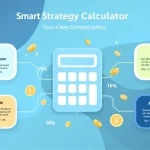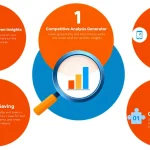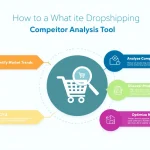Is this tool helpful?
How to Use the Price Testing Method Calculator Effectively
To get precise pricing strategy recommendations, follow these steps to fill out the Price Testing Method Calculator:
- Product or Service Field: Describe your offering clearly. Examples include “Online Language Learning Platform” or “Custom Handmade Furniture”. This helps tailor the pricing advice to your product type.
- Target Market Field: Specify the demographics and traits of your ideal customers. Use inputs like “Freelancers aged 30-45 in creative industries” or “Parents with young children in suburban areas” to define your audience.
- Current Price Field (Optional): Provide your existing selling price if available, such as “49.99” or “125.00”. This helps refine the pricing recommendations but is not mandatory.
- Competitor Prices Field (Optional): List prices from competitors for similar products or services. For example:
- Competitor X: $45.00
- Competitor Y: $60.00
- Business Objectives Field (Optional): State your key goals such as “Build brand loyalty” or “Maximize annual revenue”. This helps align the pricing methods with your broader business strategy.
What Is the Price Testing Method Calculator?
The Price Testing Method Calculator is a useful tool that helps you create an effective pricing strategy based on your product, target market, competition, and business goals. It uses these inputs to recommend pricing tests that improve your market appeal and maximize revenue potential.
By analyzing customer segments, competitors’ price points, and your objectives, the calculator identifies pricing approaches that reduce risk and boost profitability.
Key Elements Analyzed by the Calculator
- Market segmentation to understand specific customer groups
- Competitive pricing positioning for realistic benchmarks
- Price elasticity to gauge sensitivity to price changes
- Alignment with your product’s value proposition
- Metrics to optimize your overall revenue streams
How to Apply the Calculator to Your Business
This calculator supports practical pricing decisions for both new product launches and existing items. It helps you identify which price testing methods fit your unique scenario.
Examples of Practical Use Cases
Scenario 1: Launching a New Subscription Service
You offer a new online fitness subscription aimed at busy professionals. You haven’t set a price yet but want to test different options.
- Product: Online Fitness Subscription
- Target Market: Busy professionals aged 25-50
- Current Price: N/A
- Competitor Prices: $20-$35/month
- Objectives: Maximize subscriber growth
The calculator recommends methods such as multi-tier A/B testing, trial period pricing, and targeted cohort price experiments to find the optimal subscription fee.
Scenario 2: Refining Pricing for an Established Product
You sell specialty kitchen gadgets and want to optimize pricing based on competitor activity and market trends.
- Product: High-Quality Chef’s Knife
- Target Market: Cooking enthusiasts and professionals
- Current Price: $89.99
- Competitor Prices: $79-$99
- Objectives: Increase profit margin without losing customers
The tool suggests geographic price testing, bundle offers with complementary products, and limited-time discounts to measure elasticity effectively.
Understanding Recommended Price Testing Approaches
The calculator proposes a range of proven price testing methods tailored to your inputs and goals. These often include:
- A/B Price Testing: Compare customer reactions to multiple price points simultaneously
- Cohort Analysis: Test price changes across defined customer segments for targeted insights
- Geographic Pricing Tests: Adjust prices in specific regions to understand localized demand sensitivity
- Seasonal Pricing Strategies: Implement time-limited price changes to capitalize on demand variations
- Bundle Pricing Experiments: Evaluate customer uptake of product packages at different price levels
- Value-Based Pricing Models: Align price with perceived customer value and willingness to pay
Frequently Asked Questions About Price Testing
What types of test price points should I use?
Test between 3 to 5 price levels. This range balances data quality with manageable analysis, ensuring statistically significant results.
How long should I run price tests?
Test durations typically span 2 to 8 weeks. Shorter tests suit high-volume products; longer tests fit slower-moving items or seasonal markets.
Can I test multiple products at once?
You can, but keep segments distinct to avoid overlaps. Control your variables carefully when running simultaneous tests.
What metrics should I focus on during testing?
Track conversion rate, average order value, customer acquisition cost, lifetime customer value, and overall revenue impact. These KPIs help interpret test success clearly.
Does the tool consider seasonal demand?
Yes, it factors in seasonality when suggesting test timings and methods to deliver reliable guidance year-round.
Is combining different price tests effective?
Yes, combining testing methods often yields richer insights and faster learning. The calculator recommends complementary approaches where relevant.
How do I manage competitor reactions during testing?
Monitor competitor moves actively and adjust your tests accordingly. The calculator guides you in incorporating competitive dynamics for accurate results.
Important Disclaimer
The calculations, results, and content provided by our tools are not guaranteed to be accurate, complete, or reliable. Users are responsible for verifying and interpreting the results. Our content and tools may contain errors, biases, or inconsistencies. Do not enter personal data, sensitive information, or personally identifiable information in our web forms or tools. Such data entry violates our terms of service and may result in unauthorized disclosure to third parties. We reserve the right to save inputs and outputs from our tools for the purposes of error debugging, bias identification, and performance improvement. External companies providing AI models used in our tools may also save and process data in accordance with their own policies. By using our tools, you consent to this data collection and processing. We reserve the right to limit the usage of our tools based on current usability factors.







